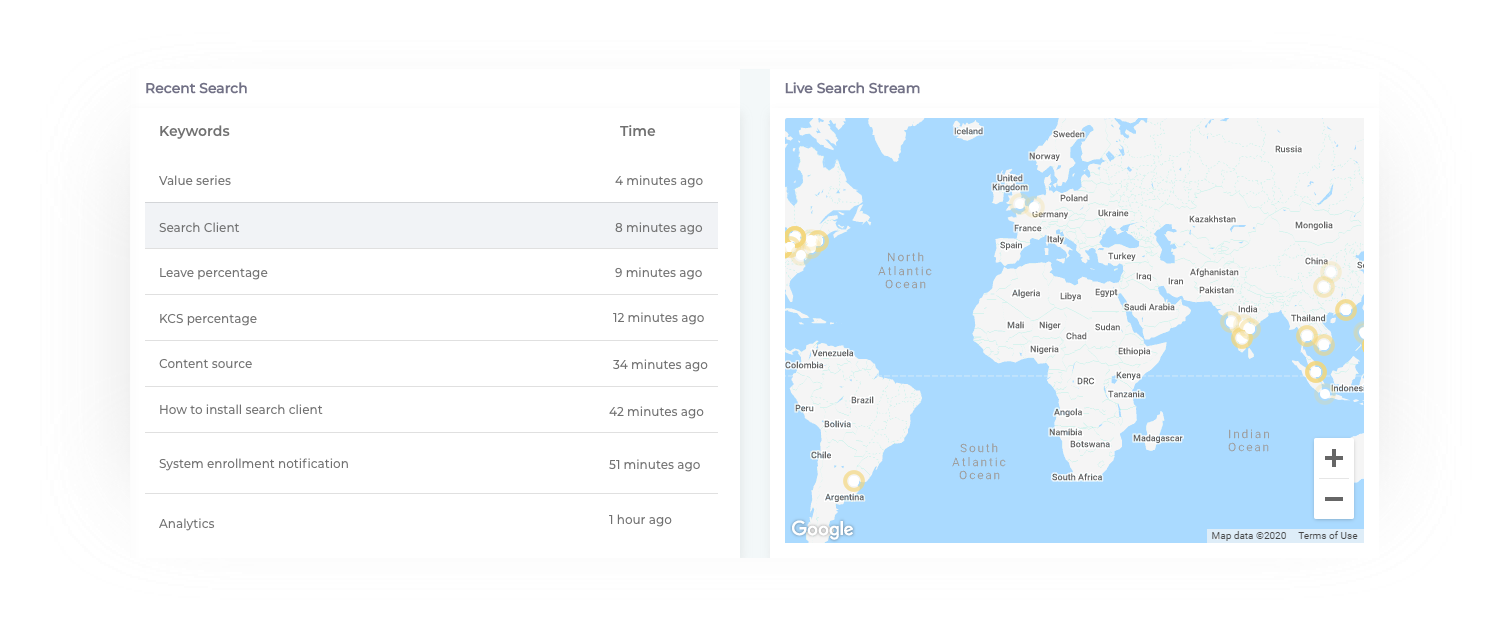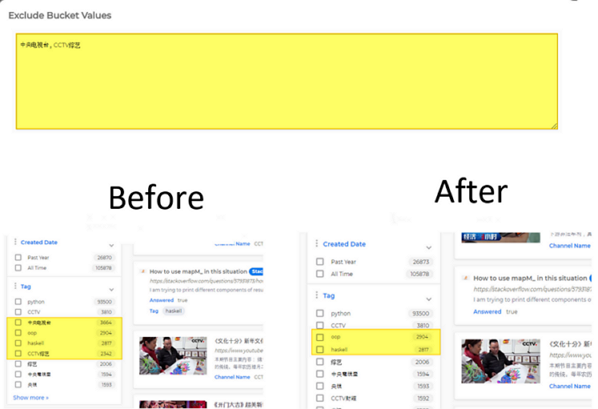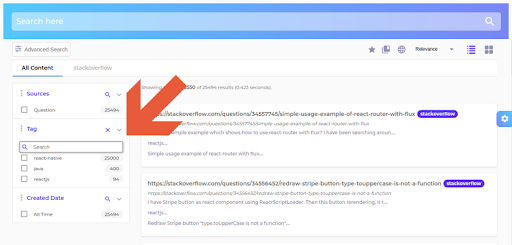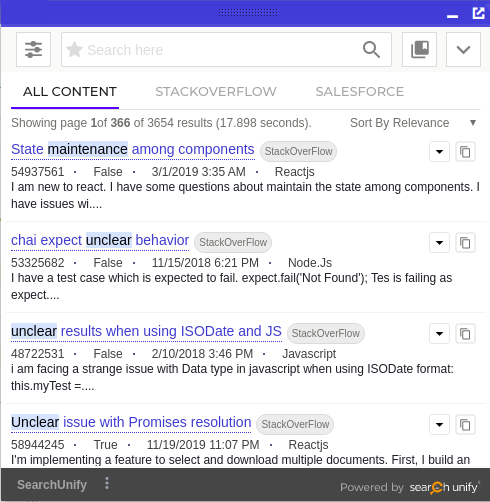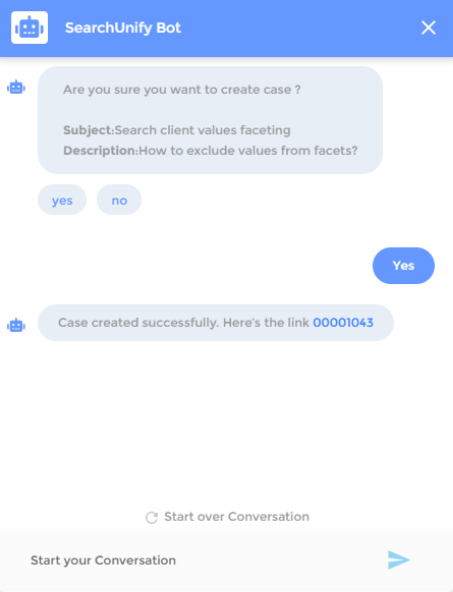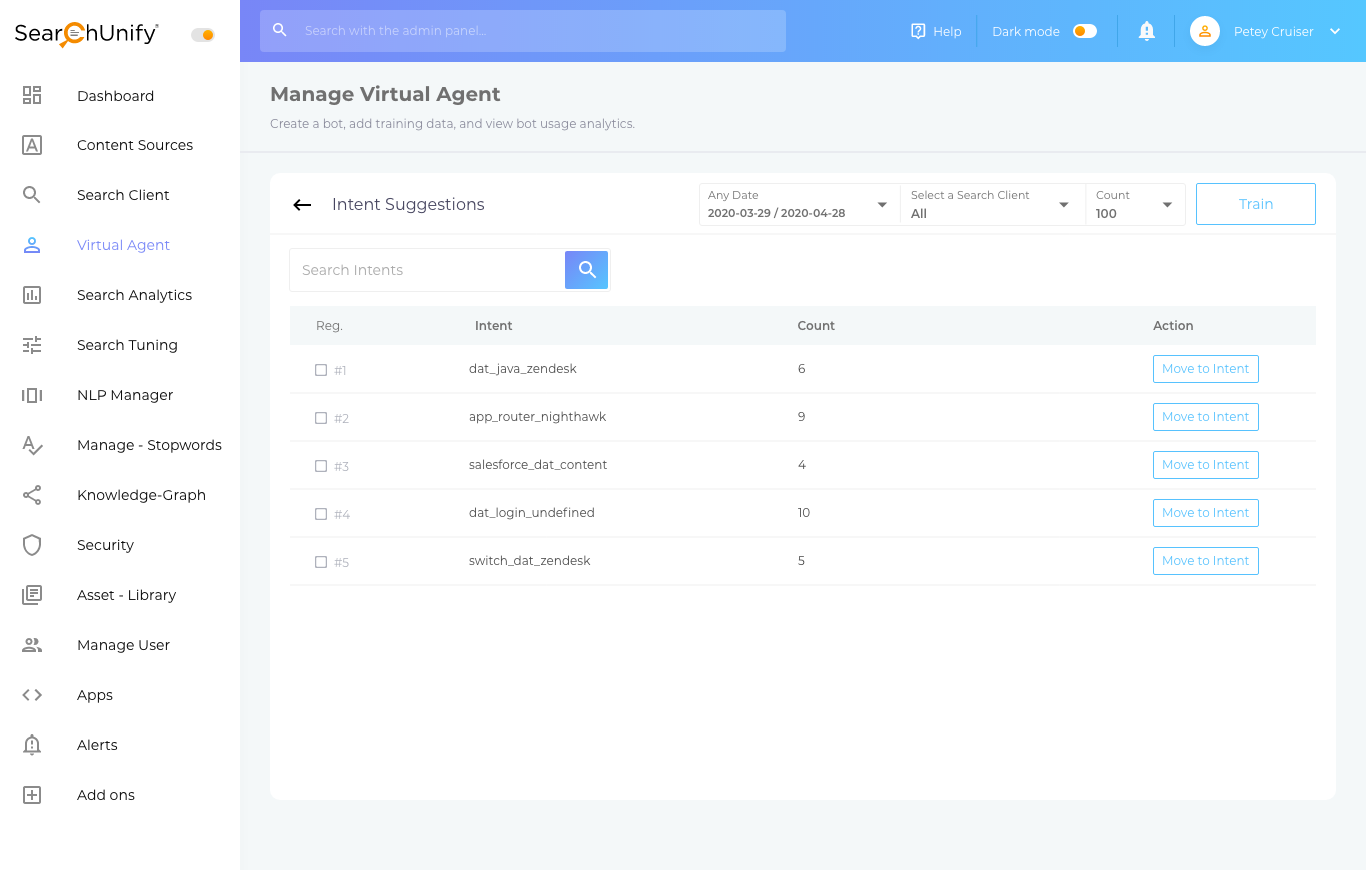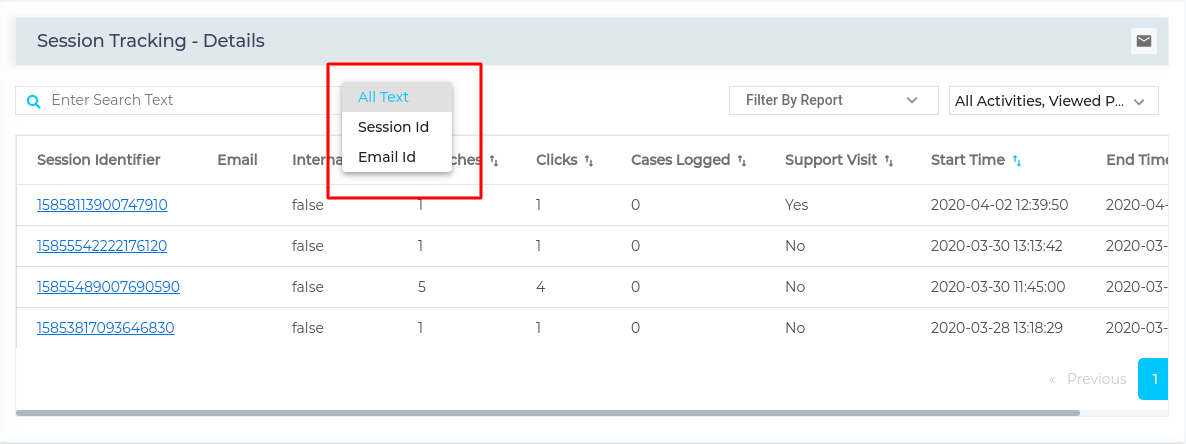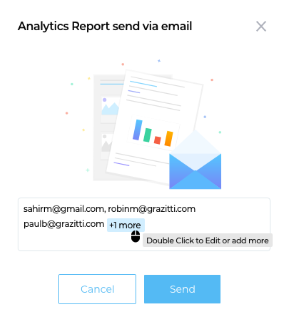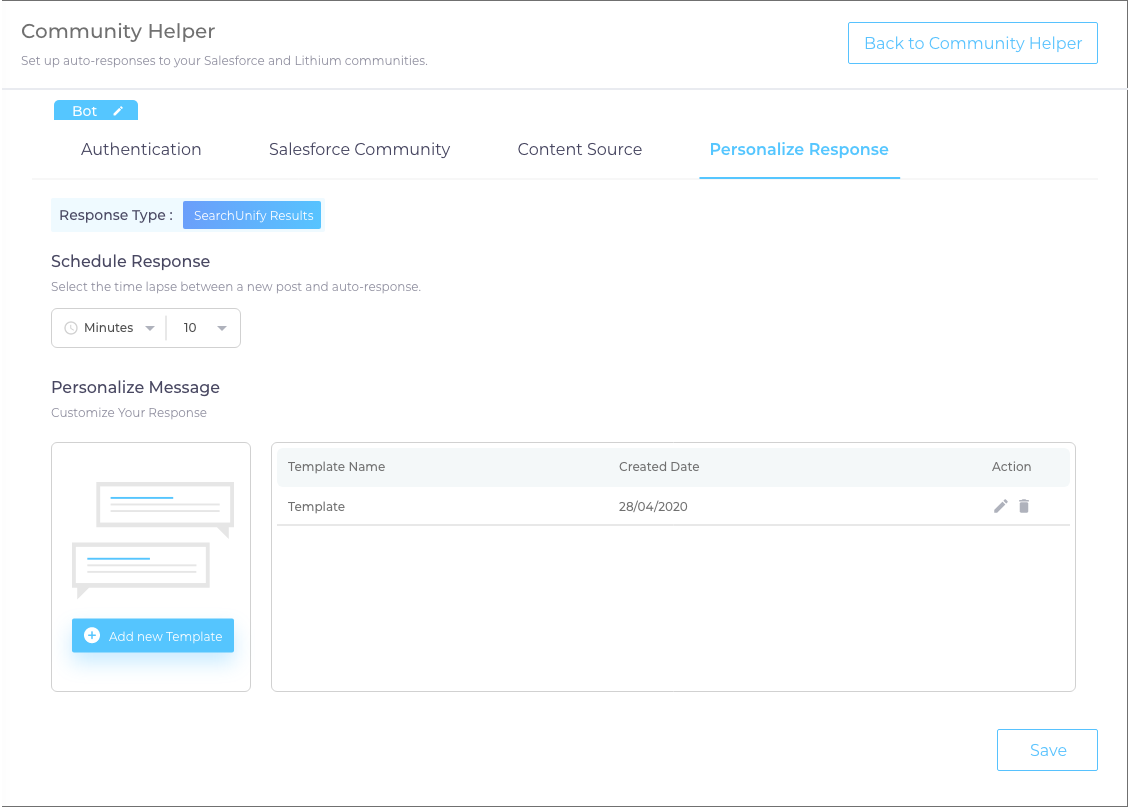Colubridae ‘20 Release Notes
Bots have come of age in Colubridae ‘20 and they are everywhere now — from one bot for each SearchUnify instance to one bot for each search client. They are the stars of this release along with Community Helper and Search Analytics. The first is an entire support team wrapped into an addon. Once set up, it transforms even inactive forums into thriving communities. In the latter, data gathering capabilities have been expanded six times and a host of new reports have been introduced to the delight of data crunchers.
Admins will find out-of-the-box support for two new content sources and three new search clients. Business owners can now serve in most locales with a reincarnated “Did You Mean”, which corrects misspelled search queries in more than 20 languages. For end users, Colubridae ‘20 brings facet search.
A summary of all the new features and updates follows.
Release Notes
Colubridae ‘20 will start rolling out to SearchUnify customers in May.
All updates-related queries can be directed to support@searchunify.com.
Home
Live-streaming of data in Recent Searches makes life easier for admins.
Enhancements
Autorefresh in Recent Searches
Recent Searches provides real-time data on trending queries. It was always a nifty way for admins to stay on top of what was being searched. Now it has become better. An admin can find real-time data on search queries in Recent Searches, just as it was in Live Stream Search, without ever having to refresh their tab.
Content Sources
Higher Logic and SkillJar are now supported. Colubridae ‘20 also expands Salesforce capabilities to be able to index article drafts and record types.
What’s New?
Higher Logic
Promote your community across all your platforms. SearchUnify can now index the user profiles, discussions, blogs, events, libraries, and other elements of your Higher Logic community, and make them searchable from virtually all your organizational platforms, including your knowledge base, website, and other platforms.
More information: Use Higher Logic as a Content Source
SkillJar
Index all your educational content and access it from anywhere with a new connector for SkillJar. SearchUnify can index all your SkillJar courses.
More information: Use Skilljar as a Content Source
Enhancements
Content API
In the pre-Colubridae ‘20 times, an admin wanting to crawl a content source through Content API could verify his identity through a basic authentication method which involved entering the content source URL. It was quick, now it has been updated for security. OAuth 1.0 is available as a second way to authenticate your Content API content source.
More information: Set up a Content Source with API
Search Salesforce Article Drafts
The articles published on a Salesforce Knowledge org tend to be vetted by several people; including the support rep who drafted it, the technical writer who wrote it, and the SME who checked it for accuracy. And they were searchable by anyone who had the right set of permissions. Now, this searchability has come to article drafts as well. Support reps or internal users creating the first draft can utilize search to be sure that they are not engaged in duplicate work.
Learn more: Use Salesforce As a Content Source
Record Fields Indexing for Lightning
When Salesforce unveiled Lightning, article type objects were replaced with a vaster record type. While many organizations have kept their knowledge base in article types, others have moved to record types. It’s to the delight of the latter that Colubridae ‘20 introduces the capability to index record types. Irrespective of your org, Classic or Lightning, you can index your knowledge base.
Search Clients
SearchUnify can now be installed on Higher Logic, AEM, and SharePoint. The “Exclude” function has become language agnostic and end users can now search facets. Besides there is a new design for the Salesforce console search client.
What’s New?
Higher Logic
Search on Higher Logic makes your community a one-stop-shop for content discovery by integrating all of your content repositories with out-of-the-box connectors. Installing the search client is easy and the data gathering capabilities of SearchUnify enable you to come up with winning strategies. As if that wasn’t enough, you can also set up a chatbot on the community.
More information: Install a Search Client in Higher Logic
AEM
Increase the real-time findability of your AEM digital assets with SearchUnify intelligent search, which delivers the right experience to the right user and provides customers and prospects easier access to your content. with SearchUnify intelligent search.
SharePoint
At times, searching for a long-lost fine on SharePoint can be more difficult than surfing the dark web. Not any longer. A new search client for SharePoint will not only keep all your websites, folders, and documents a search away, but empower you to explore all your content sources without exiting SharePoint.
Enhancements
Unicode Support Comes to “Exclude”
Exclude is a neat little feature that enables admins to configure facets. If an admin wants to remove a tag value, let’s assume “python”, from facets then all he has to do is to insert “python” into Exclude. The feature worked well as long as the value consisted of either numbers or the Basic Latin character set. Colubridae ‘20 changes that. Exclude now accepts values in most writing systems, including Hanzi, Kana, Cyrillic, and Hangeul.
More information: Exclude Facet Values from Content Fields
Find Facets to Apply
Facets are handy but not when their numbers run into the dozens, hundreds, or even thousands. Imagine a large community. The tag facet can easily contain over 10,000 terms. Although admins can use Merge Facets to categorize these values, after a certain time even it seems like a fool’s errand. Call Facet Search to the rescue. Once set up, it puts a tiny search bar in a facet box, enabling end users to quickly find a facet value even if it’s not visible; the count is decided by an admin.
More information: Advanced Search Tips: Find Facets
New Design for Salesforce Console
The search client installed in Salesforce Console has undergone a makeover. It’s now very similar to core Salesforce features both externally and internally. Main UI changes include:
- Brand new color theme to make the addon indistinguishable from native Salesforce components
- Smaller, readable typography so that a rep can find four results above the fold
- Copy to Clipboard and other buttons remain legible even on small screens
Virtual Agent
Chatbots have had a major upgrade. They now support custom slots and webhooks, analyze search data to find utterances, and accept the data stored in system entities. Anticipating that you will love them so much that you will want to use more of them, the earlier limit of one chatbot per instance has been abolished as well.
What’s New?
Create a Case on Salesforce from the Chat Window
What happens when a customer cannot find a satisfactory answer from the chatbot? Mamba ‘20 introduced a Salesforce adapter, which enables customers to connect with live agents, working in Salesforce Console, without leaving the chat window. This release goes a step further. On top of chatting with agents, customers can now log a case straight from the chat window.
More information: Set up case creation in conversation design
Custom Slots and Webhooks
The chatbot now supports one of the coolest features in the industry: slots. This new feature enables the bot to interpret user queries and answer intelligently. Webhooks draw on the power of your existing platforms to do some really exciting things, such as logging a case from the chat window.
More information: Insert Custom Slots in Responses Improve Conversations
Zendesk Connector
A new connector makes it quick for users to talk with your agents on Zendesk. The connector is for users who need more information than a bot can provide. It would enable your customers to connect with your support agents right from the chatbot window.
Enhancements
Write New Stories with System Entities
Entities are a group of related terms. For instance, case IDs can be grouped into one entity, CASEID, all customer names can be put into one class, CUSTOMERS. Admins could always define their own entities, but now they can also import entities—such as emails, phone numbers, and URLs—from their systems to expedite chatbot story development.
More information: Create Entities
Utterances and Intents from Search Queries
Your chatbot now analyses search data, groups similar queries, and suggests intents. As an admin, you can add the suggested intents to your database. If you don’t like a suggestion, dismissal is a click away. Automated analysis saves much manual work that goes into mining intents from Search Analytics data and grouping them into an intent.
More information: Add Intents and Utterances
Multiple Chatbot Agents
The old limit of one chatbot per instance has been scraped. You can now set up one chatbot for each search client. It means more personalized services across all your platforms.
More information: Set up your first chatbot agent
Search Analytics
With two new reports—Case Creation and KCS Usage Statistics—search analytics has expanded. But it’s not just the expanse, but also the depth that matters and that side has been covered as well. Colubridae ‘20 can now process and display six month’s data simultaneously, enables admins to download and email all reports, and provides superior session tracking capabilities.
What’s New?
Case Creation Report
A Salesforce-specific report to capture the cases logged on your Salesforce community along with the case IDs and case titles. Five of the report’s six columns are searchable to enable to quickly figure out who created a case, in which session, and what else the user did.
More information: Case Creation Report in Overview
Track the Usefulness of KCS-Generated Content
The pre-Colubridae ‘20 version of KCS Report tracks production statistics. A quick view of the report told you how many articles were created on a case. KCS Usage Statistics goes a step further. It lists the most prolific writers in the support team and monitors how useful those KCS-generated articles have been by tracking how many KCS-generated articles were attached to cases and shared by agents.
Find Reports that Matter to You
The sheer number of reports in analytics can be overwhelming, especially if you are new to SearchUnify. Bundling makes life easier. If you are a Community Manager, Support Manager, or Content Manager, then you can check your profile and all the reports that you might find useful will start gathering data. You can, of course, edit the list by adding or removing reports.
More information: Turn on Search Analytics
Enhancements
Data: The More the Merrier
Colubridae ‘20 is capable of displaying more data. An admin can view up to 6 months’ of data using the Date Range filter— from only 30 days in Mamba ‘20. This alone is a convincing reason to upgrade if you are looking to discover hidden patterns in search use and, based on the insights, develop a long-term strategy to assist your employees and customers faster and more efficiently.
More information: Check out Search Analytics
Craft to Data Powered Stories in Session Tracking
Data can only be used as a tool to the extent it is capable of undergoing analysis and telling stories. A 10GB data dump is nowhere as useful as a 500KB list of the 100 most popular keywords in your community. New filters in the ‘Sessions Tracking’ report enable admins to craft their own stories. They can turn on the ‘Searches’ filter to view Search Sessions and turn it off to view No Search Sessions. Or they can combine it with another filter, let’s say ‘Cases’, to find No Search Sessions that led to a case being logged. Or they can quickly discover many sessions a user created by looking up its email address or find a session quickly by searching its ID. With the tools provided in Colubridae ‘20, the number of stories that can be crafted is pretty much infinite.
Identify Articles that Failed to Deflect Cases
When issues occur, which they always do, documentation can help users fix them. It’s only when documentation fails in some way that customers turn to support. The new ‘Failed to Deflect Cases’ report captures the weakest links in your documentation: the articles were consulted before the customer logged a case and the sessions in which those articles were consulted and entire session activity. Based on this data, you can prioritize rewriting.
View More Details in Articles that Deflected Cases
Discover the real heroes, the gems in your knowledge base with a revamped Articles that Deflected Cases report. As the name suggests, it is here that you will find all the documents, that after consulting, customers never felt the need to talk to support or log a ticket. These are the articles that can be boosted to improve overall search experience.
Download and Email Reports
The download and email feature has been extended to all reports. You can download any report for further perusal in a data analysis tool of your choice. As for sharing, the email field now accepts comma separated emails, enabling you to send a report to multiple people simultaneously.
More information on Download and Share an Analytics Report
Search Tuning
Auto Tuning has grown nimbler to detect even minute changes in search client usage and a new parameter enables admins to boost articles attached to Salesforce cases.
What’s New?
Boost Articles Attached to Salesforce Cases
Capitalize on the collective judgement of the support reps with Salesforce Articles (Attached to Case) in Custom Boosting. The idea is simple. If you think that your agents would attach only those articles to cases that they deem useful, then you can give a rank boost to those agent-vetted articles.
More Information: Custom Tune Search Results
NLP Manager
Query corrections in multiple languages, guaranteed results on each suggestion, and synonym recognition are the highlights of NLP Manager in this release.
Enhancements
Konnichi wa Did You Mean
SearchUnify could always detect misspelled words and suggest alternatives as long as the search queries were in English. It has changed. Now it can correct こんにちわ to こんにちは (Japanese for “Hello”) and dooté to douté (French for “doubted”) and здраствуйте to здравствуйте (Russian for “Hello”). To put it another way, Did You Mean now works for all major languages, which include French, German, Spanish, Portuguese, Japanese, Italian, Chinese, and Korean.
More information: Try out the new Unicode-compliant Did You Mean
Did You Mean Guarantees Results
You can have your cake and eat it too. The anguishing choice between Custom Dictionary and Standard Dictionary has been replaced with a pleasant default that brings you the best of both. Did You Mean is now powered by your content sources, which means each suggestion guarantees at least one result. All the same time, it remains connected to a standard dictionary to ensure that Did You Mean is triggered only when the search query is nonstandard. “klient” triggers Did You Mean but “kamikaze” doesn’t.
More information: Providing Useful Suggestions through Did You Mean
Did You Mean Recognizes Synonyms
Most organizations have in-house jargon and it usually falls on the person managing information retrieval to strike a balance between the jargon and terms more commonly understood. A common such term is int, which all programmers know stands for an integer. But people who don’t spend their entire working days writing code, might not immediately decrypt and probably never search this three letter mystery. SearchUnify has long provided a solution in Synonyms Manager. Once an admin sets int and integer to synonyms, then a search for either keywords brings about the same results. In this release, the solution has gotten a little better. Did You Mean now recognizes uncommon synonyms and doesn’t correct int to “ant”, “end” or anything less useful.
More information: Add Synonyms and Did You Mean
Addons
The SearchUnify app store has a new addon, Community Helper.
What’s New?
Be Active on Community 24x7
If we had a Feature of the Release award, it would have gone to Community Helper. Installing this addon and configuring it will have the same impact on your community as hiring an entire team. Once set up, it stays in the background and keeps looking out for unanswered threads. Once it finds a thread that hasn't been answered during a specified interval (which an admin decides), it responds to the original poster. An admin can configure response templates with placeholders. Built-in AI ensures that the correct template is fired all the time.
More information: Set up Community Helper


